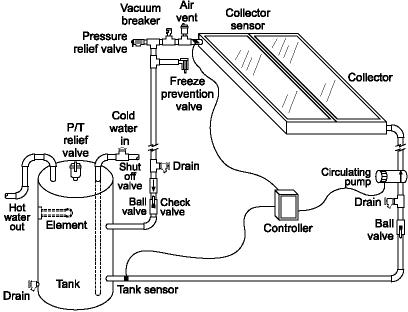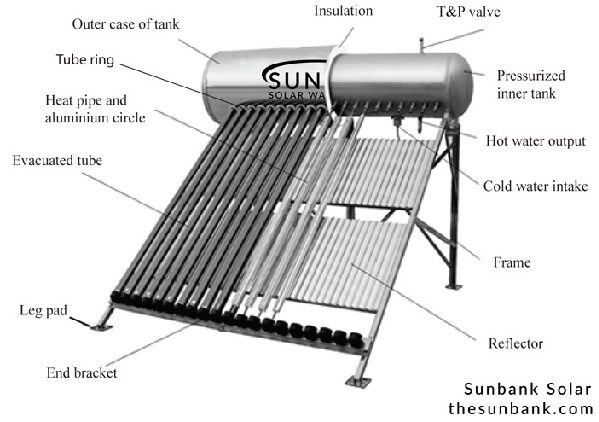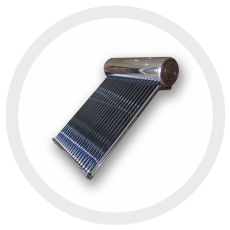Active vs Passive Solar Water Heaters
The Difference Between Active and Passive Solar Water Heaters
Solar water heaters can be split into two main categories – active and passive systems. The difference between these two categories is simple: active systems require pumps, and passive systems do not. Within the active and passive categories there are subcategories that we explore in more detail in other posts. Active systems are typically either glycol or drainback systems, and passive systems can be thermosyphon or ICS systems. Active and passive systems can either be direct (meaning the potable water passes through the collector) or indirect (suggesting that there is an antifreeze involved). For the purposes of this post, let’s focus on the main differences between active and passive systems.
Active Solar Water Heaters
The first commercially available solar water heater was a passive solar water heater. It’s the obvious solution: put a black box on the roof and let the sun heat the water. This was the solution from the 1890’s to the 1980’s, but it came with some drawbacks – the water could overheat in the summer or freeze in the winter. Both of these outcomes being suboptimal. So, a solution was engineered. Put the collectors on the roof, the tank in the house, and pump antifreeze through the collector using a heat exchanger to capture the heat.

However, this solution came with it’s own issues. When the antifreeze would overheat, it would acidify and start to destroy the piping. Also, when it overheated, it would blow the pressure valve and drain the system of antifreeze. When there was no pressure in the antifreeze loop the system would not work anymore but the customer, with their electric or gas backup water heater still working, would have no idea that it was non-functional (nor any idea how to fix it if they were aware). Because you don’t know to call your plumber, the problem that you can’t see can be worse than the one you can. This is the case today, with many active systems on roofs that are non-functional and their owners blissfully unaware.
Active systems also come with inherent complexity that makes them much more expensive to install and maintain, and almost impossible for the DIY installer. And they rely on pumps which consume electricity and, like any moving part, fail. When the pump fails, you are left with the same overheating problems mentioned above. There must be a better way.
Passive Solar Water Heaters – Reimagined
Dissatisfied with active systems that were too expensive and unreliable, engineers went back to the drawing board. It started in Israel, where engineers designed a new type of passive solar water heaters that overcame the shortcomings of the past design, and could be widely adopted. Israel has an over 90% adoption rate of solar water heaters. Their design has been iterated upon and has evolved into the Sunbank. A solar water heater that is an indirect thermosyphon – a system that has freeze protected collectors to -35F, has built in overheat protection, and can be widely adopted in most climates in the U.S.

Give us a call!
(888) 385 0005
2020 5th St #1713
Davis, CA 95616
©2011-2024 Sunbank Solar, Inc.
All Rights Reserved

Sunbank SB-80G
80 Gallon Solar Water Heater $3,999 ($2,799 after tax credit)
